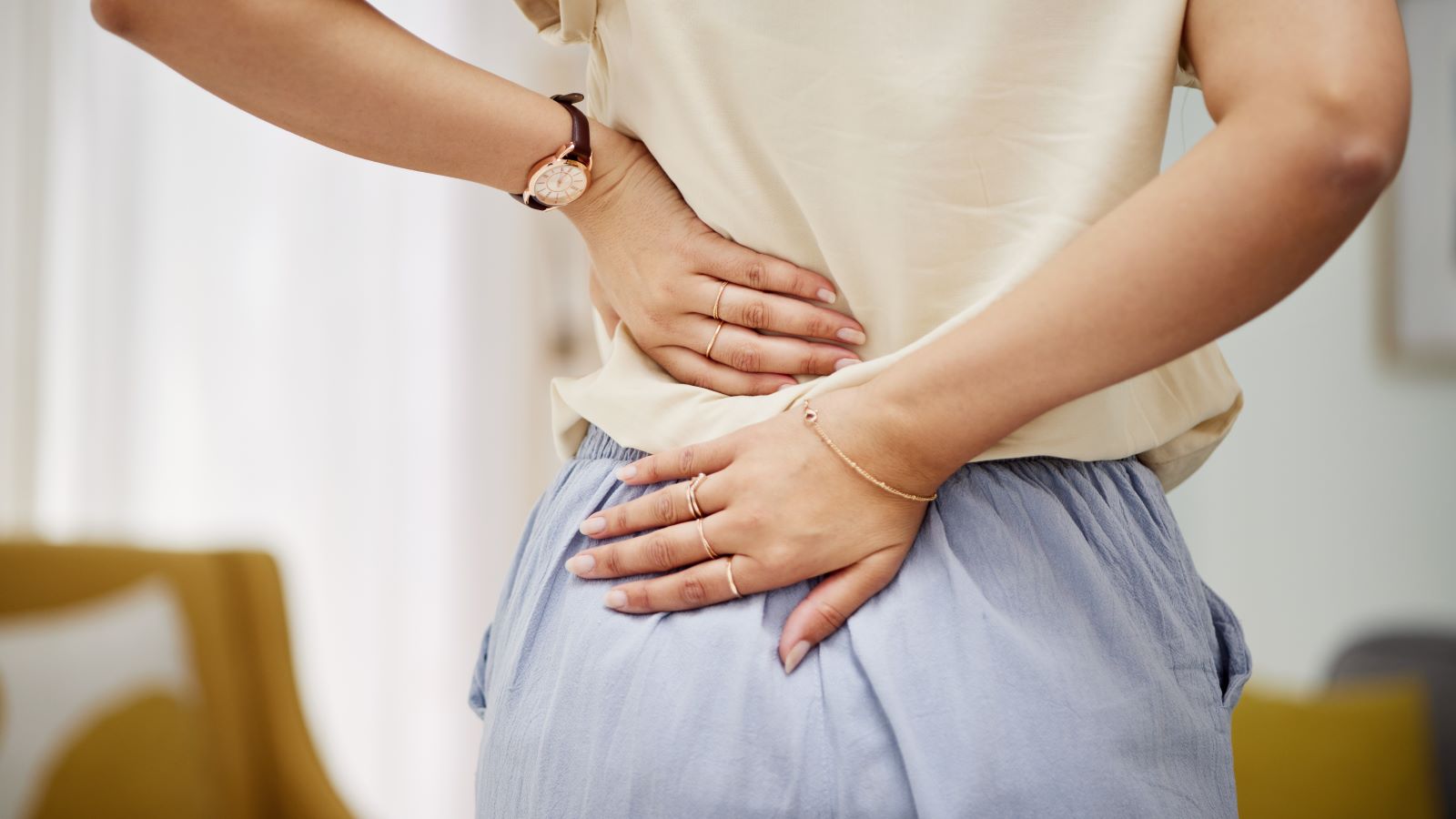<< Back
5 Things to Know About Hip and Back Pain

October 02, 2024
Back and hip pain often go hand in hand, especially when arthritis is involved.
The reason? The two areas are closely connected by shared nerves and muscles, meaning the pain connection goes both ways, according to John Irving, MD, medical co-director of the Connecticut Orthopaedic Institute at St. Vincent’s Medical Center.
“Back and hip pain from arthritis can coexist and the symptoms, signs and location can overlap,” he explains.
Here’s how the joints work together, why arthritis can impact both, and how you can relieve your pain.
1. Spine arthritis can radiate to the hips or legs.
Back pain sometimes occurs in isolation, but it’s common for spine arthritis to radiate to the hips or legs. Two nerve bundles are the reason for this connection:
- The sciatic nerve, which runs through the buttock and down the back of the leg.
- The femoral nerve, which passes through the pelvis to the groin and down to the front of the knee.
“If the spine problem involves these nerves, pain and numbness can radiate to the back of the leg as sciatica or, more rarely, to the front of the thigh and groin,” Dr. Irving says. “Back arthritis pain can even extend to the ankle and foot in some patients.”
2. And the same goes for hip arthritis.
“Hip arthritis pain can be felt in many of the same areas,” explains Dr. Irving
Hip arthritis generally causes pain in the groin or the outer side of the hip, though it’s less common to feel it in the buttocks. This pain can travel, often reaching the knee or lower back, much like pain from compressed nerves in the spine.
> Related: Should I See a Doctor or a Chiropractor for Back Pain?
3. The key? Understanding the hip-spine connection.
Hip arthritis can also start to have an impact on your back over time.
“Advancing hip arthritis typically includes loss of range of motion with stiffness in the hip which can cause added strain on the spine as your body compensates, worsening a spine arthritis problem,” Dr. Irving notes.
Advanced spine arthritis, also known as spinal stenosis with loss of disk space, can change the normal orientation of the pelvis and hip joint, causing the hip to deteriorate, he adds.
4. Physical therapy can help arthritis early on.
Physical therapy can help ease the pain of arthritis in the hip and back in the early stages. They focus on:
- Correct posture
- Increasing hip and spine movement
- Strengthening spine and hip muscles.
5. Seeing a doctor shouldn’t wait.
To determine the best approach to hip or back pain, you’ll likely need x-rays or an MRI of the areas involved.
“Back pain is a common problem affecting a high percentage of the population during their lifetime, however if pain lasts more than a few weeks, gets worse and radiates down the leg, you should be evaluated by a physician,” Dr. Irving says. “It’s important to determine early on if there is a nerve compression issue from the spine so we can prevent permanent damage.”